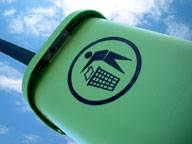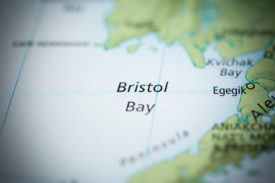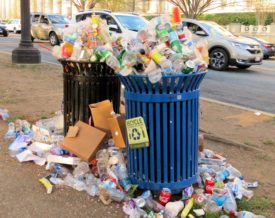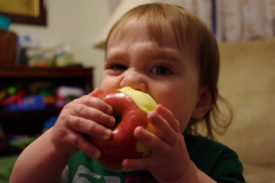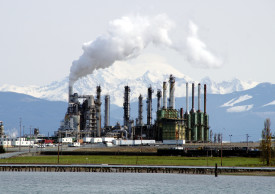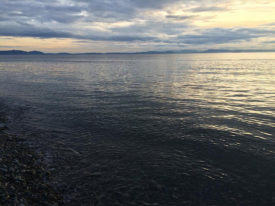By Alan Durning
One important but little-discussed difference between the Canadian and American parts of Cascadia is their different philosophies about trash. This difference has emerged in the last decade. And, sad to say, the Canadians have left the Americans in the dustbin, so to speak.
By embracing a concept called “product stewardship” or “extended producer responsibility,” British Columbia has adopted a far less regulatory, government-centered approach, even while they’ve made dramatic gains in waste reduction and recycling.
The idea of product stewardship springs from posing an unfamiliar question: Who’s responsible for products you buy when you’re done with them? In other words, who takes out the trash?
The customary answer to that question is, “You do.” But in practice, the answer has become, “local government.”
Trash hauling has been a local-government responsibility since a century ago, when public hygiene depended on getting rubbish (and the rats and insects it fostered) out of town. But the composition of solid waste has changed radically in the past century, while responsibility for garbage has not. A century ago, urban wastes consisted mostly of ashes and biodegradable scraps such as food waste. Now, the solid wastes that Cascadian communities handle are overwhelmingly discarded consumer products and their packaging.
Product stewardship shifts responsibility for waste from government to those who design the products and packaging-the manufacturers. Manufacturers have the largest opportunities to reduce lifecycle environmental and health impacts, because the design phase of the product chain is the most critical to reducing waste.
In practice, product stewardship means that industries keep reuse and recycling in mind when planning products and they band together to create reuse and recycling systems. Retailers and industry-sponsored depots give rebates to consumers returning used goods covered by product stewardship, such as paint. Industry organizations collect and reuse or recycle the goods, often recouping the costs of collection by gaining a relatively “pure” stream of recyclables. The paint stream is all paint, for example, not the profusion of different substances currently brought to household waste sites in American Cascadia.
Next: Part II–The heartbreaking history of product stewardship
More information: Sightline research
Extend the bottle bill: Product stewardship
Sightline’s pollution indicator
Other resources
EPA’s product stewardship page
Washington State’s E-Cycle program page
Organizations
Northwest Product Stewardship Council
Recycling Council of British Columbia
Zero Waste Washington (formerly Washington Citizens for Resource Conservation)

